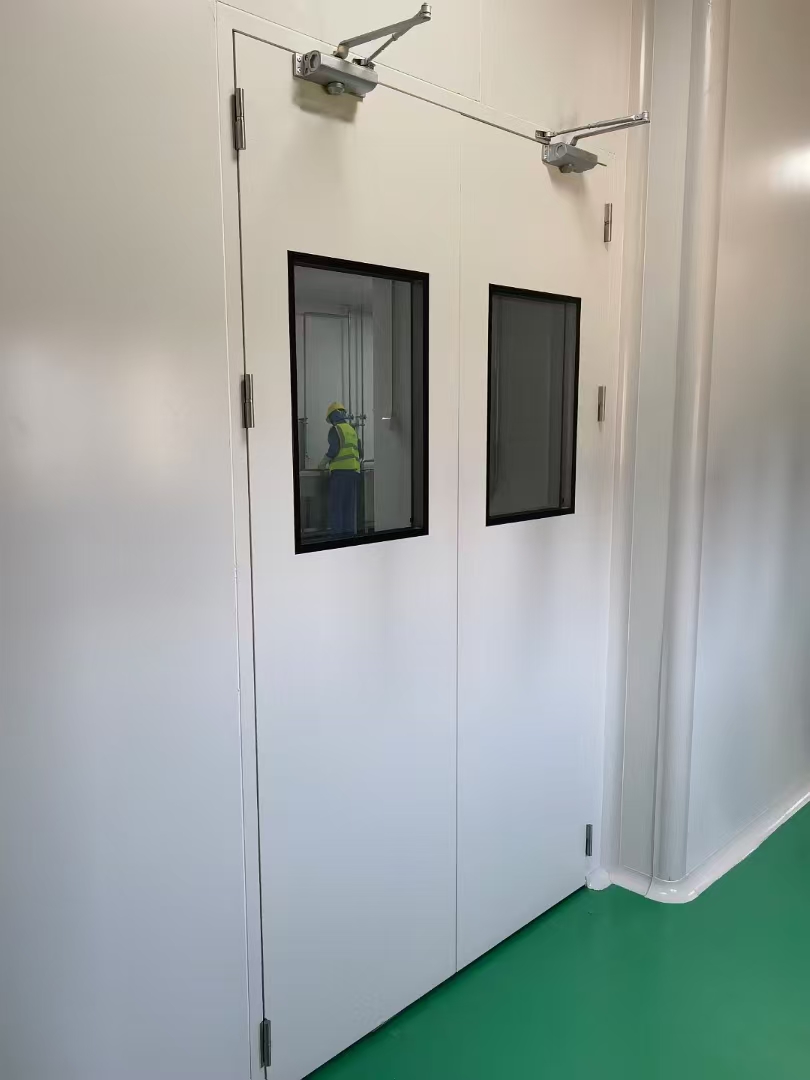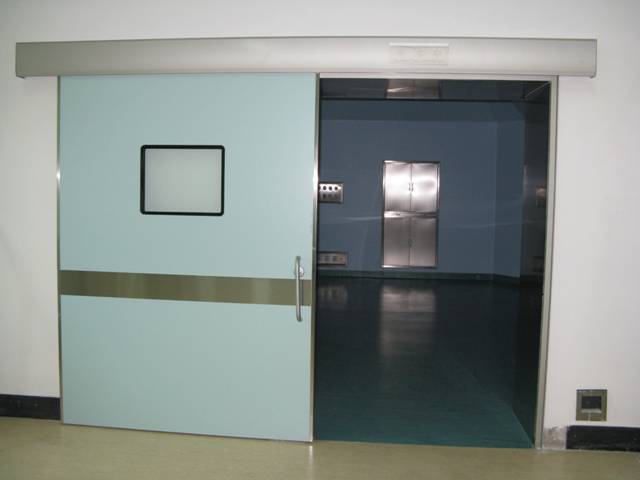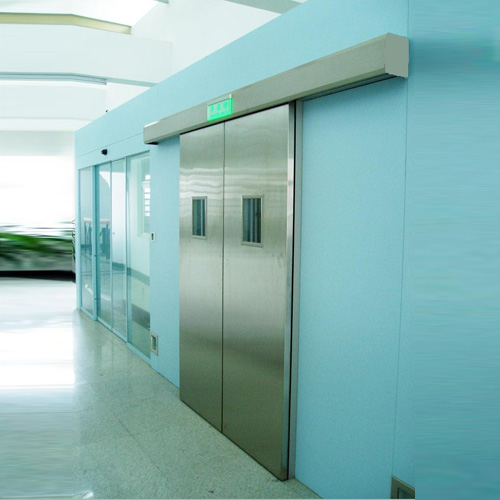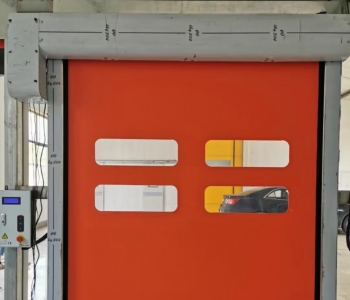Application Differences Between Electric Sliding Doors and Electric Swing Doors
1. Structural and Operational Differences
Electric Sliding Doors
Operating Principle: Driven by a motor via a synchronous belt or rack-and-pinion system, the door panels slide horizontally along tracks. Available in top-hung (overhead track) or bottom-rolling (floor-embedded track) configurations.
Key Components: Main controller, motion sensors, power motor, synchronous belt, track system, and suspension hardware.
Features: Smooth operation, low noise (especially magnetic levitation types), support for multi-panel synchronization, and space efficiency.
Electric Swing Doors
Operating Principle: Rotate outward or inward around a vertical hinge axis, powered by hydraulic closers or motor-driven mechanisms.
Key Components: Main controller, door closer, power motor, and hinge assembly.
Features: Wide opening angle (up to 90°), superior sealing, but requiring ample clearance for full operation.

2. Application Scenarios
Electric Sliding Doors
Industrial and Warehousing Facilities: Ideal for factories, warehouses, and logistics centers requiring large spans, high-frequency operation, and wind resistance.
Cleanroom Environments: Pharmaceuticals, electronics manufacturing, and food processing industries, where airtightness and contactless operation (e.g., sensor activation) are critical.
Commercial Spaces: Shopping malls, hospitals, and office buildings with high foot traffic and demand for rapid access.
Electric Swing Doors
Residential and Villa Settings: Gates, garages, and courtyards, valued for aesthetic versatility (e.g., aluminum or stainless steel finishes).
Specialized Industrial Use: Laboratories or workshops requiring rapid isolation between zones of differing cleanliness or safety levels.
Emergency Exits: Double-action swing doors enable bidirectional opening, suitable for fire exits or high-security areas.

3. Functional Comparison
| Characteristic | Electric Sliding Doors | Electric Swing Doors |
|---|---|---|
| Wind Resistance | High (suited for large spans and high wind loads) | Moderate (panels prone to wind-induced sway) |
| Sealing Performance | Moderate (gaps in tracks may compromise sealing) | High (tight seal between panels and frames) |
| Smart Features | Remote control, multi-panel coordination, variable speed | Integration with access control systems, limited coordination |
| Maintenance Costs | Track cleaning required; complex for top-hung types | Hinge lubrication and closer adjustments needed |
| Installation Demands | Track embedding; low floor flatness requirements | Clearance for rotation; precise frame alignment |

4. Cost and Selection Guidelines
Sliding Door Costs: Higher initial fabrication (material and labor-intensive), but economical for mass production; maglev types offer energy savings at elevated upfront costs.
Swing Door Costs: Lower for standard models, but premium variants (e.g., soundproof or radiation-shielded) may exceed sliding door prices.
Selection Criteria:
Prioritize Sliding Doors: Space constraints, high-frequency operation, or stringent cleanliness requirements.
Prioritize Swing Doors: Superior sealing, smaller door sizes, or bidirectional access needs.
Summary
Application-specific requirements dictate the optimal choice:
Sliding doors excel in large-span, high-traffic, and cleanroom environments (e.g., factories, hospitals, electronics facilities).
Swing doors prioritize sealing integrity, aesthetics, and emergency functionality (e.g., villas, labs, or secure zones).
Final decisions should account for budget, maintenance feasibility, and site-specific installation conditions.
Q: Which door type better suits high-traffic industrial facilities?
A: Electric sliding doors excel for:
→ Throughput: 100+ cycles/hour capability → Space efficiency: Zero frontal clearance needed → Durability: Steel tracks withstand forklift impactsSwing doors struggle with:✖ Frequent activation wear ✖ Required clearance arcs
Q: How do energy losses compare in climate-controlled environments?
A: Tested performance:
• Sliding doors: 0.3 m³/s air leakage @75Pa (standard gasket) • Swing doors: 0.9 m³/s @75Pa (even with automatic closers)Solution: Sliding doors + brush seals reduce losses by 60%
Q: What are the accessibility compliance differences?
A: Regulations favor sliding doors for:
✔ ADA/EN 16005 minimum 36" clear openings ✔ Hands-free activation options ✔ Predictable movement patternsSwing doors require:
❗ Delayed closing mechanisms ❗ Larger maneuvering clearances
Q: Which provides better security for controlled access areas?
A: Feature comparison:
Sliding doors: • Integrated metal detectors • Anti-lift roller systems
Swing doors: • Multi-point locking options • Better resistance to forced entry
Recommended Products
up to date Automatic Door Accessories
- Durable PVC Fast Rolling Door Fittings for Enhanced Security
- Automatic Repair of Zipper Door Plastic/Polymer Rails
- Smart Automatic Door Sensor for Fast Rolling Access Control
- Soft Fast Gate Control System 1.5kw Servo Motor and Control Box
- Automatic Access Control Square Surface Mount Infrared Non-Contact Switch
- Explosion-Proof Reinforced Self-Limiting Electric Heating Belt
- Explosion-Proof Shielded Self-Controlling Temperature Electric Heating Belt
- Heating Belt for Anti-Freezing, Heating and Heat Preservation of Cold Storage Doors
- 40W flame retardant explosion-proof self-limiting electric heating belt
- High Speed Door Zippers Industrial Door Zippers
- Safety Beam Sensor Use for Automatic Door
- Wireless Hand Sensor Switch For Automatic Door
- Hospital Door Foot Sensor
- Automatic Sliding Door System Wireless Touch Press Switch
- Automatic Sliding Door IP65 Waterprooft Wireless Hand Press Switch
- Automatic Door Microwave Sensor
- Reflective Type Infrared Detector
- Automatic High Speed Door Infrared Radar Sensor CNB-204G
- Aluminum Alloy Wind Section For PVC rapid roller shutter door
- Aluminum Bottom Section For PVC high speed rolling shutter door







